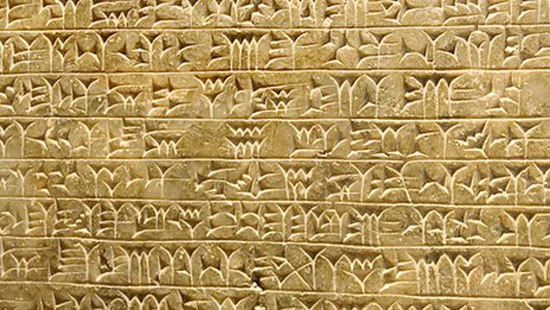Restoring ancient language
Researchers have created computer software to restore primitive languages that were the foundation for today's language.
To test the system, the team surveyed 637 languages that are considered being used in Asia and the Pacific, thereby hoping to recreate the words that used to be the original foundations for languages. this.
Currently the study of ancient language reproduction is done by linguists, but the process is very elaborate and slow.

Scientists are trying to reconstruct the ancient language
Professor Dan Klein at the University of California, Berkeley (USA) said, it is necessary to have huge data sets from thousands of languages in the world, very time consuming for cross-reference to find gaps as variable change of ancient language through space and time. People are limited, so this is where computers "shine".
The original language is gradually changed over time, heterogeneous pronunciation gives rise to descendants of the original language. With computer software, the remaining models can be the basis for defining models and 'reversing' over time.
Scientists have proven their system efficiency by influencing the Austronesian language group being used in Southeast Asia, parts of Asia and the Pacific.
From the database of 142,000 words, the software of the computer system was able to recreate somewhat of the ancient language. They believe that 7,000 years ago this original language was a pre-degenerate language into the death penalty today.
According to the BBC news agency, the way computer software performs compared with the elaborate identification of linguists who achieve a similarity of 85%.
Computer software will compare, compare and refine to select results much faster than human. However, in order to get high accuracy results, it is necessary to revise the language experts.
Dr. Klein admitted that computer software still has some shortcomings in how to change the morphology of language.
- Save the language of Jesus
- Who lived 13,600 years ago, the oldest in America looked like this?
- Ancient stone steles in the
- What language did the ancients use?
- Discover the forgotten language in Turkey
- 50 years, 220 languages were
- New discovery about the evolution of language
- Programming language history
- The stone helps to decode the ancient Egyptian language
- The 'new world' scenario if humans speak a common language
- Half the world language risk being wiped out
- Strange language: Whistling to communicate
 Discovered an ancient centipede fossil 99 million years old
Discovered an ancient centipede fossil 99 million years old Discovered bat-like dinosaurs in China
Discovered bat-like dinosaurs in China Discovered a 200-year-old bronze cannon of the coast
Discovered a 200-year-old bronze cannon of the coast Discover 305 million-year-old spider fossils
Discover 305 million-year-old spider fossils